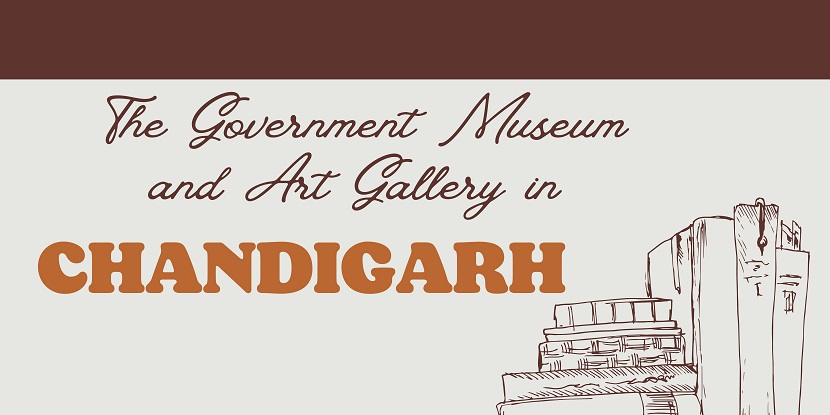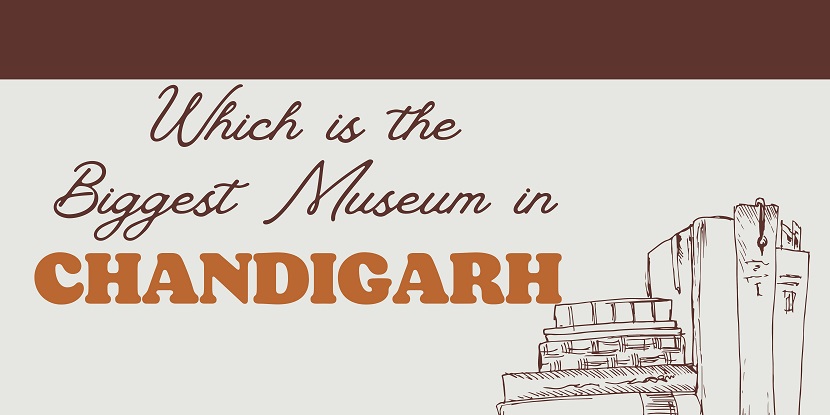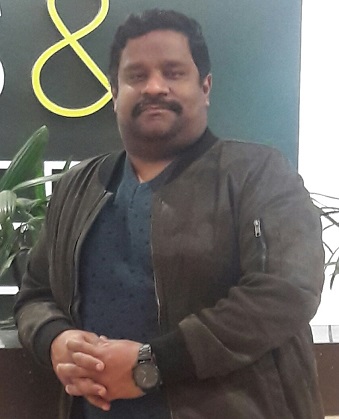The Museum and Art Gallery in Chandigarh
The Museum and Art Gallery in Chandigarh is one of the city’s premier cultural institutions, known for its impressive collections of Indian artwork as well as artifacts related to the history and cultural heritage of the Punjab state.
Established in 1947, shortly after India gained independence from British rule, the museum was part of Le Corbusier’s original master plan for the city. Corbusier and Pierre Jeanneret designed the building.
Over the decades, the museum has become an important repository for art and antiquities from the region. Its collections today include miniature paintings, stone sculptures, illustrated manuscripts, tantric art, phulkari textiles, artworks by modern Indian artists, and more – all providing insight into the vibrant artistic traditions of North India spanning many centuries.
Collections and Galleries
The museum contains over 5,000 art objects in its permanent collection and temporary exhibits that are rotated through several galleries. Some of the key collections and galleries include:
Miniature Paintings Gallery: This section contains one of India’s finest collections of Pahari and Rajasthani small paintings from the 17th-19th centuries. Highlights include illustrations of the Mahabharata and Ramayana epics and portraits of the rulers of the Hill Kingdoms.
Contemporary Indian Art Gallery – Showcases modern and contemporary paintings, drawings, photographs, and sculptures by some of India’s leading 20th-century artists like M.F. Husain, Amrita Sher-Gil, Jamini Roy, and more.
Archaeological Treasures Gallery – Displays artifacts from the ancient Indus Valley Civilization settlements in Harappa and Mohenjo-daro dating back to 2500 BCE. Sculptures from the Buddhist and Hindu eras between the 1st and 12th centuries are also exhibited.
The Arts and Crafts Gallery – Exhibits artisanal crafts from various states of India, including phulkari embroidered textiles from Punjab, miniature paintings from Rajasthan, stonework & terracotta items, and more. This offers insight into the continuum of India’s living cultural traditions.
Tribal & Folk Arts Gallery – Showcases expressive tribal and folk art from different Indian states, highlighting the diversity of indigenous art practices.
The City Museum: Uses objects, paintings, photos, and models to depict the history and development of Chandigarh from the mid-20th century onwards after the partition of British India.
Sculpture Courtyard: The open-air courtyard in the museum contains monumental stone, bronze, and wooden sculptures by modern Indian sculptors. Notable works include Dhoom Singh’s bronze sculpture ‘Torso’ and the stone ‘Santhal Family’ by Ramkinkar Baij.
The museum also operates an art restoration laboratory and conservation facility on-site for preserving its collections. Overall, the diverse galleries and exhibits symbolize the museum’s dedication to preserving both classical and folk Indian art as well as Chandigarh’s unique heritage. (Museum and Art Gallery in Chandigarh)
Architecture
The Museum and Art Gallery building was designed by Le Corbusier and completed in 1968. It is considered one of his most iconic works, integrating his modernist sensibility with elements of local Chandigarh style. The interiors combine exposed brick, floating staircases, sloping concrete ramps, and screens with murals and artworks incorporated into the spaces.
The building is in the city’s heart, and its distinctive dome and arches are visible from afar. The breezy spaces diffused natural lighting, and tree-ringed courtyards create a serene environment to view art.
The clever zoning allows the museum to accommodate open galleries and more sensitive collections requiring regulated environments. Architecture has become an integral part of experiencing art at this institution.
The openness echoes Corbusier’s vision for Chandigarh as a ‘city of gardens’ with living spaces interwoven with nature. The locale by the tranquil Rose Garden suits the museum’s identity as a vibrant cultural center promoting the arts. In recognition of its architectural legacy, the building is on India’s national list of heritage sites protected by the Archaeological Survey of India. (Museum and Art Gallery in Chandigarh)
Exhibitions and Events
The museum regularly organizes special exhibitions alongside its permanent displays in partnership with other museums and art institute’s. Recent exhibitions have included shows on traditional textiles of Punjab, artistic traditions of Buddhism, miniature painting techniques, contemporary sculpture, and more.
The museum also offers a year-round calendar of public programs to engage local audiences. These include artist talks & panel discussions, classical music performances, art appreciation workshops, and hands-on art activities for children. Occasionally, festivals celebrating local culture are hosted in the museum courtyards.
Overall, the vibrant programming ensures that the institution serves as a lively venue for experiencing Indian art along with Chandigarh’s contemporary cultural landscape rather than just being a repository for the past.
The exhibitions and events attract students, artists, designers, tourists, and families, underscoring the museum’s identity as a democratizing force advancing art appreciation in the region. (Museum and Art Gallery in Chandigarh)

The Role of the Museum in Chandigarh
Since its inception, the museum has been instrumental in the cultural development of Chandigarh. In the early years after Indian Independence, Chandigarh was a new city still establishing its identity. Under the guidance of its first director, Dr. Mulk Raj Anand, the museum quickly assembled noteworthy collections and held exhibitions to nurture artistic talent in the region.
These early efforts paved the way for Chandigarh to emerge as a thriving center for the arts over the coming decades. The museum provided institutional support for artists to converge around the city and establish creative communities. Gradually, private galleries, arts clubs, and design schools flourished in the area.
Today, Chandigarh enjoys a bustling art scene encompassing both traditional and contemporary genres – a culture the museum initially fostered through its exhaustive collections and sustained community programming.
Additionally, as a repository for Chandigarh’s urban history from its modernist inception, the museum has been instrumental in preserving its identity.
For visitors, it provides a lens for understanding Chandigarh’s distinctive trajectory shaped by influential figures like Le Corbusier and Pierre Jeanneret, who developed it as Punjab’s new capital in the 20th century.
Both the architecture and collections chronicle this interesting history as a model planned city emerging under the tenets of modernism yet firmly rooted in Indian heritage.
For decades, generations of local students and citizens have experienced the city’s art, history, and cultural identity through the museum’s exhibits and activities. As such, this institution remains a cherished space for the people of Chandigarh.
Even as new galleries and museums emerge in the region, the Museum and Art Gallery continues to hold special recognition as both a founding site for art in the city and a world-class architectural asset. (Museum and Art Gallery in Chandigarh)
Future Direction
As the museum enters its eighth decade, further expansion plans are underway to enhance its facilities, collections, and visitor experience. Proposals exist for adding a specialized conservation lab for antiquities, digitizing records for better access to the 55,000 artifacts cataloged, upgrading storage and restoration infrastructure, and installing climate control systems in all display areas.
There are also plans to reorganize galleries to strengthen narrative flow and context. More spaces for contemporary art, interactive exhibits, and auditoriums for public events are also being considered.
Embracing technology is another key priority, as the museum aims to reach online audiences to promote Indian heritage globally. Virtual tours, high-resolution digitized images, and expanded online catalogs are in production using recent grants secured by the Ministry of Culture.
The museum is also committed to accessibility and inclusion efforts to make spaces disabled-friendly and welcoming to diverse social groups.
By strategically upgrading infrastructure, the museum aims to transform into a world-class Smart Museum while retaining its original essence as a space for creativity, repose, and community engagement with the arts.
The vision ahead aligns with Le Corbusier’s decades-old ambition for Chandigarh’s cultural institutions – to nurture art appreciation amongst the masses and promote the city as a thriving nexus of artistic talent.
The Museum and Art Gallery continue working earnestly towards this vision even today through its ever-expanding collections, exhibitions, and programming. (Museum and Art Gallery in Chandigarh)

FAQ
Which is the Biggest Museum in Chandigarh?
The Government Museum and Art Gallery is the biggest museum in Chandigarh. It is located in Sector 10 and was established in 1947. This museum has a collection of more than 20,000 works of art, including miniature paintings, stone sculptures, coins, contemporary Indian art, and more.
It also has a Natural History section. With its vast collection spread over a large area, the Government Museum and Art Gallery is considered the biggest museum in the city. (Museum and Art Gallery in Chandigarh)
How many museums are there in Chandigarh?
There are around five major museums in Chandigarh:
- Government Museum and Art Gallery
- National Gallery of Portraits
- Chandigarh Architecture Museum
- Government School of Art Museum
- Chandigarh War Memorial
So, five notable museums preserve the history, art, architecture, and culture of the Chandigarh region and attract good visitor footfall.
Are museums and art galleries the same? | What is the difference between an art museum and an art gallery?
No, a museum and an art gallery are not the same. Though they may exhibit art, there are some key differences:
Museum:
- Focuses on the exhibition, preservation, and interpretation of historical, artistic, and cultural artifacts and objects
- Usually larger, housing permanent collections and exhibitions
- A broader range of collections spanning different fields
Art Gallery:
- Primary focus on the display and sale of artistic creations
- Usually, commercial establishments dealing in art
- Include works by living artists
- Display works may not have permanent collections on a short/medium-term basis.
So, while museums can contain art galleries, the focus of an art gallery lies more in displaying contemporary creations, while museums have a wider historical and educational ambit in preserving artifacts and artworks from various periods for public viewing. (Museum and Art Gallery in Chandigarh)
List of museums in Chandigarh?
The prominent museums in Chandigarh are:
- Government Museum and Art Gallery
- National Gallery of Portraits
- Chandigarh Architecture Museum
- The Government School of Art Museum
- Chandigarh War Memorial
So, in Chandigarh, you can explore museums dedicated to art, architecture, war history, specific collections like portraits, and more. The Government Museum remains the most prominent, with its vast repository of artifacts.
The specialized museums also showcase specific themes and collections for those interested in history and culture.
Thanks for visiting – Chandigarh News in Hindi | Chandigarh News in English | Chandigarh News Live| Chandigarh Latest News | Chandigarh News Today | Chandigarh News | Chandigarh Latest News | चंडीगढ़ न्यूज़ | Chandigarh News Hindi



